Planned Gifts
Do you ever wonder what the future holds?
While it's impossible to know or control what happens in the future, you can have security about achieving your ultimate goals by making a plan. Planning is one way to create a secure future for you and your loved ones. With a good plan, you can rest easy knowing that your family will be well cared for and your property will pass to your intended beneficiaries.In considering your plans for the future, you may not only be thinking about how to help your family and save on estate taxes but also how you might benefit our community. There are a variety of ways you may make a planned gift to leave a lasting legacy and enjoy valuable tax savings.
- Consider a planned gift to the Permanent Fund for Northern Virginia to support the future needs and seed innovation for future generations in our community.
- Establish a fund using one of the giving tools below.
- Help make a sustaining gift to a particular cause you care about through one of the Community Foundation’s current field of interest funds.
If you have any questions about leaving your lasting legacy, please contact us. We work every day with others who want to make a difference through their planned gift. We would be happy to share some examples and answer any questions that you have.
Please let us know if you have already made a planned gift to the Community Foundation for Northern Virginia. We would like to thank you and recognize you for your gift.
Below we’ve outlined a number of planned giving tools for you to consider with your financial advisor.
A beneficiary designation describes how your assets will be distributed upon your passing. It is often easier to make a charitable gift by completing a beneficiary designation form provided by your account administrator than it is to visit your attorney and update your will. Some of the more common assets that transfer through beneficiary designations are retirement accounts like IRA’s, 401(k)s or 403(b)s, savings accounts, checking accounts, mutual fund accounts, or life insurance policies.
A Charitable Lead Trust helps you build a charitable fund with your community foundation during the trust’s term. When the trust terminates, the remaining assets are transferred to you or your heirs, often with significant transfer-tax savings.
You transfer assets into a trust, which pays the community foundation an annual amount to build a charitable fund. During its term, the trust can be managed expertly by experienced trust professionals, which may help your trust investments grow over time. When the trust terminates, either upon your death or after a specified number of years, its final assets are transferred to those you designate; any growth in the trust passes to recipients, often with significant transfer-tax savings.
A Charitable Lead Trust entitles you to a number of financial benefits. It shelters investment earnings from tax, and it offers gift, estate, and generation-skipping tax benefits. For example, trust assets are removed from your estate for estate tax purposes. You may also capture future gift tax deductions. However, at the time your trust is established, you may owe gift tax on the present value of your gift to the final beneficiary.
You have several options when establishing your trust. You can create a Charitable Lead Trust during your life or through your will. The trust contributes to charity through your community foundation — either for a number of years or for your lifetime. And, you select one of two types of Charitable Lead Trusts. A Charitable Lead Unitrust makes annual distributions of a fixed percentage of the trust assets to the charitable fund you establish. If you create a Charitable Lead Annuity Trust, the charitable fund you establish will receive a fixed dollar amount each year.
You transfer assets into a trust, which pays the community foundation an annual amount to build a charitable fund. During its term, the trust can be managed expertly by experienced trust professionals, which may help your trust investments grow over time. When the trust terminates, either upon your death or after a specified number of years, its final assets are transferred to those you designate; any growth in the trust passes to recipients, often with significant transfer-tax savings.
A Charitable Lead Trust entitles you to a number of financial benefits. It shelters investment earnings from tax, and it offers gift, estate, and generation-skipping tax benefits. For example, trust assets are removed from your estate for estate tax purposes. You may also capture future gift tax deductions. However, at the time your trust is established, you may owe gift tax on the present value of your gift to the final beneficiary.
You have several options when establishing your trust. You can create a Charitable Lead Trust during your life or through your will. The trust contributes to charity through your community foundation — either for a number of years or for your lifetime. And, you select one of two types of Charitable Lead Trusts. A Charitable Lead Unitrust makes annual distributions of a fixed percentage of the trust assets to the charitable fund you establish. If you create a Charitable Lead Annuity Trust, the charitable fund you establish will receive a fixed dollar amount each year.
Giving through a Charitable Remainder Trust allows you to receive income for the rest of your life, knowing that whatever remains will benefit your community.
You transfer assets into a trust, and the trust pays you or a beneficiary you designate regular income payments. Upon the beneficiary’s death or after a defined period of years, the remaining assets in the trust transfer to the community foundation.
You may choose to receive a fixed income or one that changes with market conditions — income from the Charitable Remainder Trust you establish may add up to more than interest and dividends you earned from holding the assets. You can use it to supplement your own lifestyle or that of someone other than yourself: a sibling, a dependent parent, a friend, or a former employee.
You can pick one of these options for your Charitable Remainder Trust:
You transfer assets into a trust, and the trust pays you or a beneficiary you designate regular income payments. Upon the beneficiary’s death or after a defined period of years, the remaining assets in the trust transfer to the community foundation.
You may choose to receive a fixed income or one that changes with market conditions — income from the Charitable Remainder Trust you establish may add up to more than interest and dividends you earned from holding the assets. You can use it to supplement your own lifestyle or that of someone other than yourself: a sibling, a dependent parent, a friend, or a former employee.
You can pick one of these options for your Charitable Remainder Trust:
- Annuity trust pays you a fixed dollar amount.
- Standard unitrust pays you an amount equal to a fixed percentage of the net fair market of the trust and is recalculated annually.
- Net income unitrust pays you the lesser of the fixed percentage specified by the trust agreement or actual trust income; some net income unitrusts allow you to make up deficiencies in past years.
- Flip unitrust is a net income unitrust that converts to a standard unitrust upon a triggering event, such as the sale of an asset used to fund the trust.
Including a charitable bequest in your will is a simple way to make a lasting gift to your community. When you make this gift through the Community Foundation, we establish a special fund that benefits the community forever, and becomes your personal legacy of giving. You can decide to do it at any age by adding to an existing will or drafting a new one. In doing so you leave a legacy to your community, while enjoying the assets you need to maintain your current lifestyle. Plus, you can distribute some or all of your assets, tax free.
You can give cash, appreciated stocks, or other assets. Some of the most tax-efficient asset types to give through your will come from retirement plan accounts, since heirs would be taxed on the income in respect of the descendent (IRD). You can choose to give a stated dollar amount, a specific property, a percentage of your estate, the remainder after distributions to other beneficiaries, or you can make your gift contingent on certain events
You can give cash, appreciated stocks, or other assets. Some of the most tax-efficient asset types to give through your will come from retirement plan accounts, since heirs would be taxed on the income in respect of the descendent (IRD). You can choose to give a stated dollar amount, a specific property, a percentage of your estate, the remainder after distributions to other beneficiaries, or you can make your gift contingent on certain events
Many of today’s retirees have amassed considerable wealth in their IRAs, more wealth, in fact, than they need for daily living or long-term care. And for those with substantial estates, much of their IRA wealth will go to estate taxes and income taxes of non-spousal beneficiaries, leaving some heirs with less than 50% of the IRA assets that are left to them. For these reasons, you may want to use your IRA as a current source of charitable gifting. We’ve compiled some Frequently Asked Questions about gifts through IRA’s.

 Questions?
Questions?



